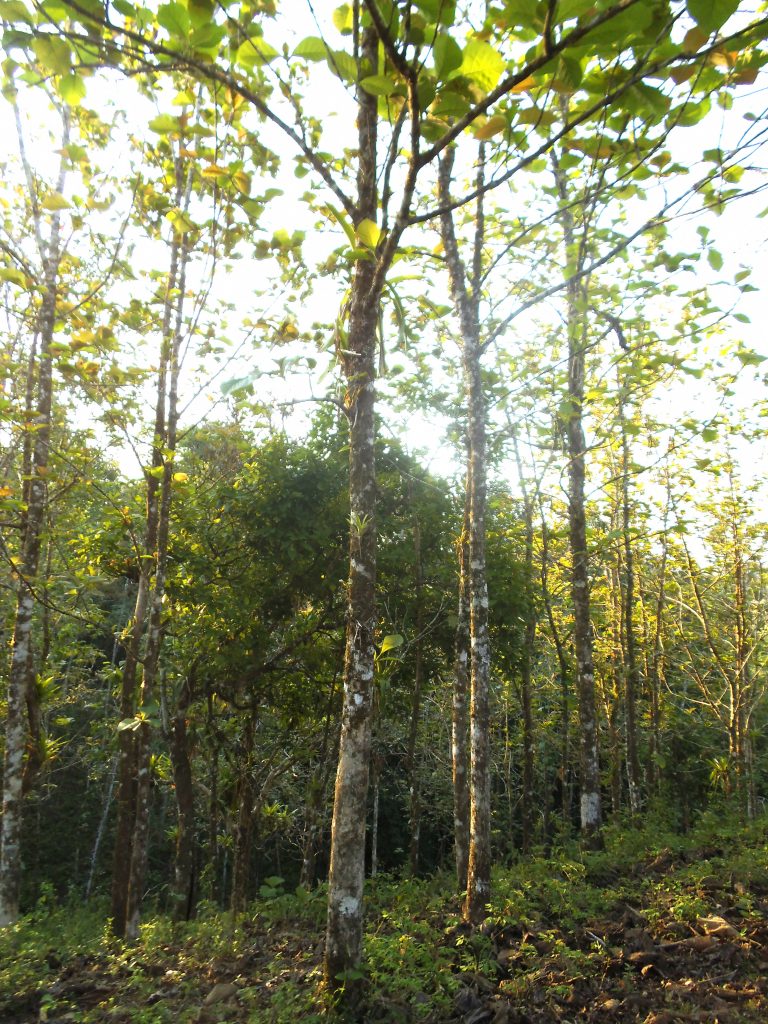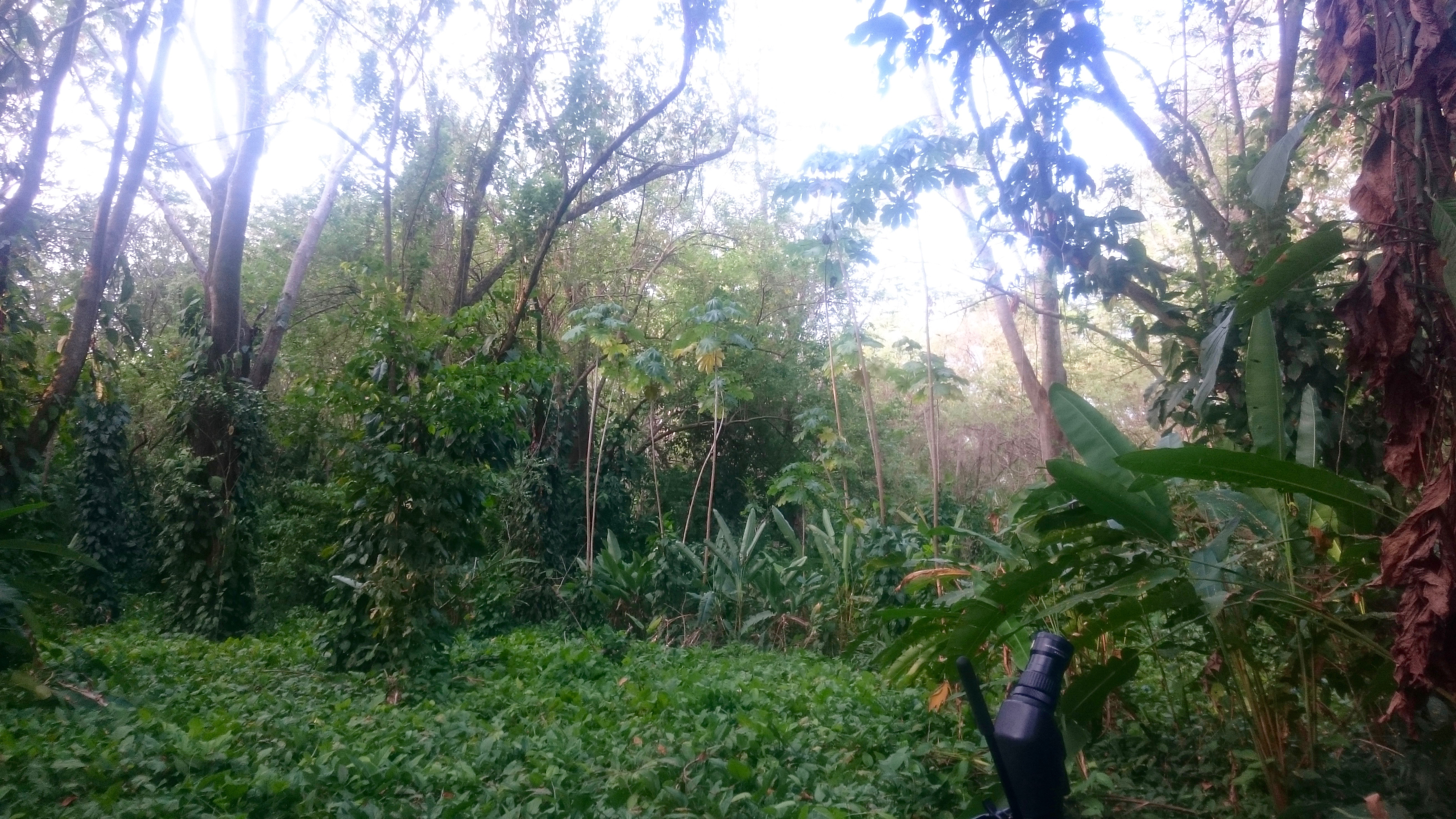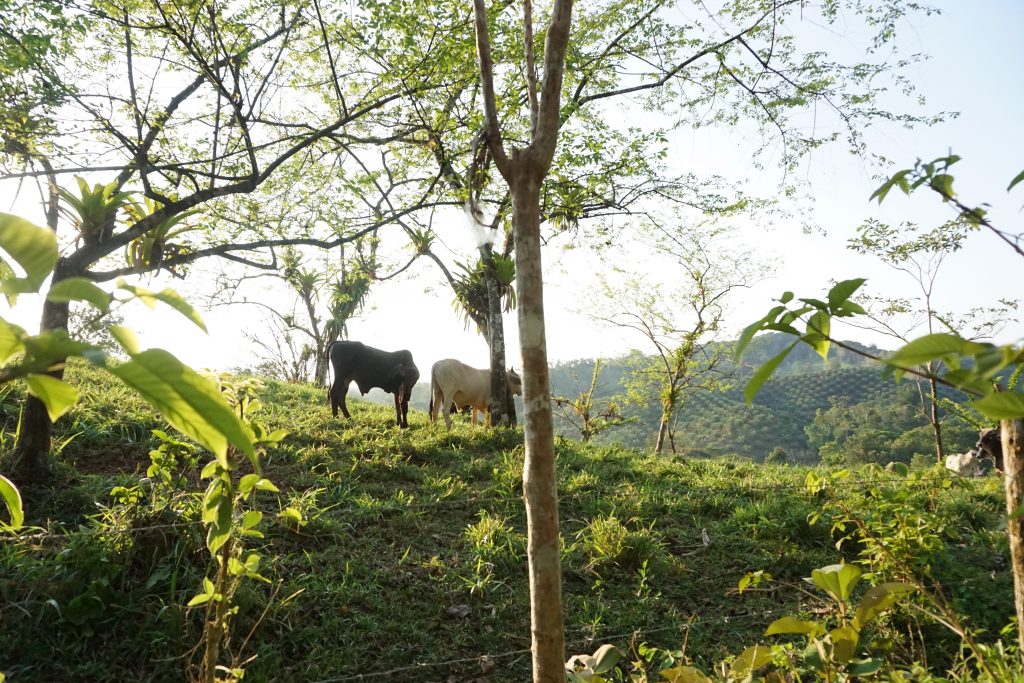When Costa Rica began conserving and replanting forests in the 1960s-1970s, the government encouraged people to plant teak trees. The trees grow fast and straight, and the wood is of good quality. What’s not to like about it?

What the government didn’t anticipate with teak trees is the ecological damage. The presence of teak trees is hurting the Costa Rican rainforest ecosystem because the bioactive extracts from teak tree leaves is preventing undergrowth from growing.
Teak trees contain two organic compounds that act as an herbicide for weed suppression: anthratectone and naphthotectone (Ferguson). Compare the level of undergrowth from pictures that showcase a teak tree forest and a secondary rainforest with native plants. The weed suppression is great for teak trees – they get to grow with minimal competition. However, these bioactive extracts aren’t so great for rainforest under-story.
Rainforest structure typically consist of four layers: emergent, canopy, under-story, and forest floor. The emergent layer is the top level of the rainforest, consisting of large, towering trees. Next is the canopy layer, comprising of a dense network of leaves and branches, which covers the next two layers (National Geographic Education).

The under-story layer houses shorter plants, and a large variety of common house plants (philodendrons, zebra plants, peace lilies) come from this zone. And last but not least, the forest floor where organic matter decomposes quickly due to the lack of direct sunlight and level of humidity.
In areas where teak trees have been introduced, the under-story is the zone that is most affected. The under-story provides a unique environment that houses countless different species of flora and fauna, many of which that are specialized for a specific niche that exists in the undergrowth. For instance, Dendrobates auratus, or more commonly known as the green and black poison dart frog, lives in the rainforest under-story, where the setting is vegetated and moist (“NAS–Nonindigenous Aquatic Species”). However, these frogs are unable to flourish in areas with teak trees because of the lack of dense vegetation, and the humidity created by said dense vegetation. The absence of undergrowth also hinders the ability for some species to camouflage to the environment, which is crucial for survival.
However, it is not to say that teak trees are without benefits. Aside from their excellent wood quality and lack of undergrowth which makes for easier forest navigation, these introduced plants are sometimes a lesser of two evils. In Costa Rica, there is a considerable amount of rainforest that was converted to pasture for cattle farming. After extensive use and trampling by cattle farmers and cattle, some of these lands have become insufficient as pasture. Many have hoped for the jungle to reclaim these areas after being left alone for a certain amount of time, but a portion of these regions have remained barren. As a solution, some landowners have chosen to reforest these areas with teak trees. These trees may not be able to provide adequate habitat to some of Costa Rica’s native species, but at the very least, they are able to prevent erosion, provide some habitat, and offer shade for other organisms to grow.
Ferguson, James J., Bala Rathinasabapathi, and Carlene A. Chase. “Allelopathy: How Plants Suppress Other Plants.” EDIS New Publications RSS. University of Florida. Web. 03 Apr. 2016.
“Green and Black Poison Dart Frog (Dendrobates Auratus) – FactSheet.” NAS – Nonindigenous Aquatic Species. U.S. Department of the Interior, U.S. Geological Survey. Web. 03 Apr. 2016.
“Rain Forest.” National Geographic Education. National Geographic Society, 2015. Web. 03 Apr. 2016.
Written by Emilie Chien
